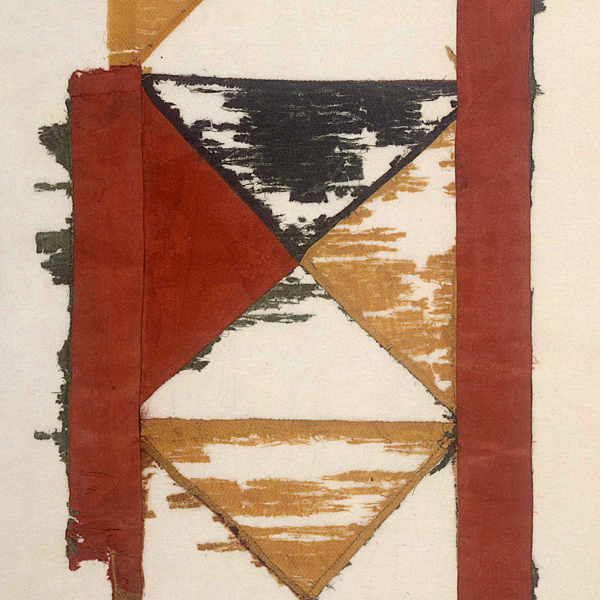Calligraphy and Textiles/Painting and Textiles/Painting, Calligraphy and Textiles
-

Fragment of Ban (Buddhist Ritual Banner), With each square section consisting of four triangular pieces sewn together (detail), Nara period, 8th century
The Gallery of Horyuji Treasures Room 6
April 22, 2025 (Tue) - May 18, 2025 (Sun)The works of calligraphy held in the Gallery of Horyuji Treasures primarily consist of records donated to the temple by Empress Kōken (713–770), works imported from China during the Tang dynasty (618–907), and Horyuji Temple’s records of daily events as well as legends concerning Prince Shōtoku.
The textiles held in the collection date from the mid-7th to 8th century and consist mainly of Buddhist ritual banners (ban), table mats (joku), and robes or other clothing worn by monks. The textiles also include fragments whose original uses are unknown, including rare ancient textiles, such as warp-faced compound weaves, tapestries, warp ikat fragments, complex gauze (ra), and plain- and twill- weave silks.
Dyed fabrics include examples of all three major dyeing techniques form the 8th century: tie-dyeing in a dot pattern (kōkechi), wax-resist dyeing (rōkechi), and clamp-resist dyeing (kyōkechi). The collection also features examples of early embroidery, braiding, and rugs.
| Designation | Name | Creation/ Excavation/ Provenance |
Period | Acquisition/ Ownership/ Accession Number |
CMT | ||
| Highlight | Important Cultural Property | Lotus Sutra ("Hokke-kyō") | Nara–Heian period, 8th–9th century | N-12-1 | |||
| Highlight | Important Cultural Property | Lotus Sutra ("Hokke-kyō") | Nara–Heian period, 8th–9th century | N-12-2 | |||
| Highlight | Fragment of "Ban" (Buddhist Ritual Banner), With each square section consisting of four triangular pieces sewn together | Nara period, 8th century | N-319-22 | ||||
| Highlight | Fragment of "Ban" (Buddhist Ritual Banner) “Banner Leg,” With paired dragons and four-petal flower design roundels | Asuka–Nara period, 7th–8th century | N-319-27-1 |
